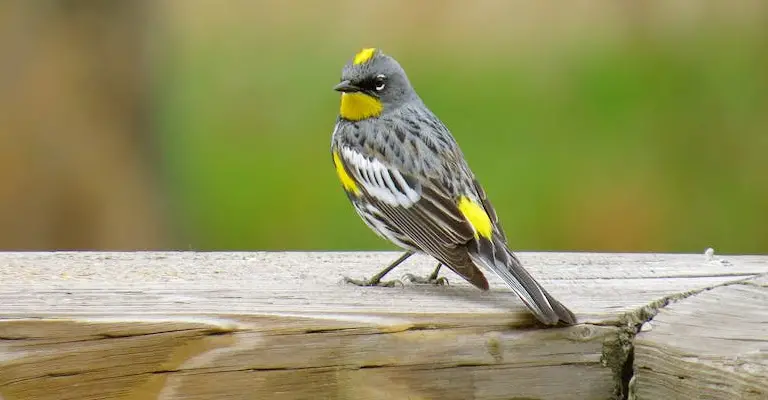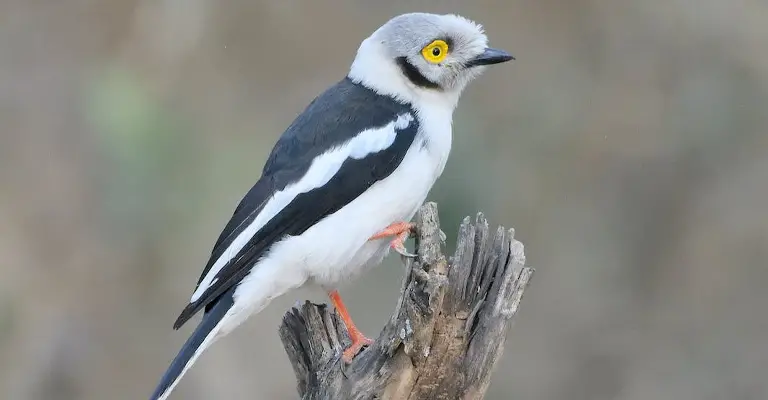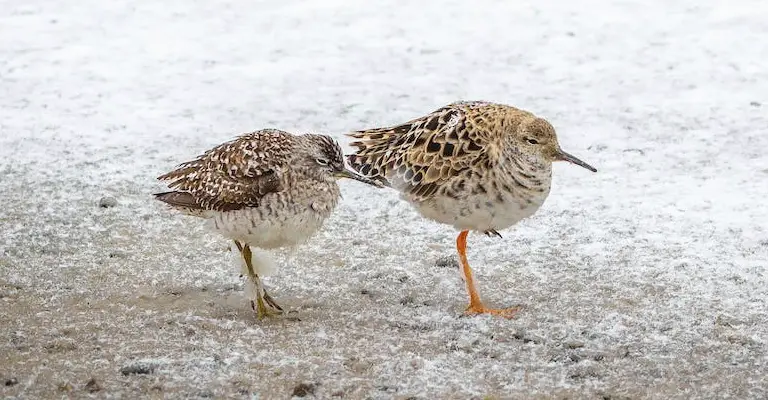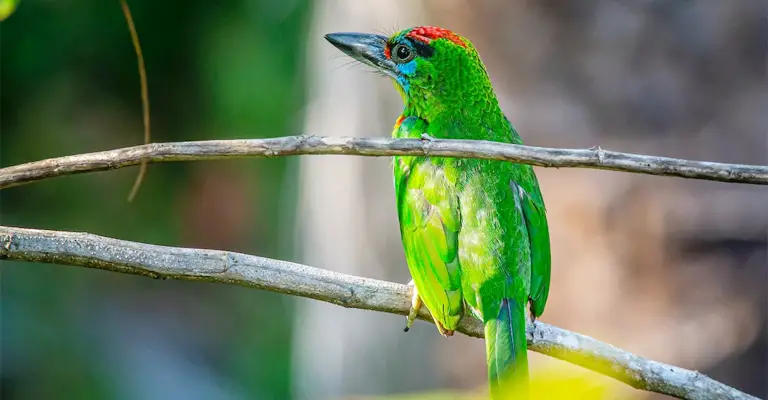In the avian world, it is often the males that steal the show with their dazzling array of colors, while their female counterparts remain comparatively drab.
This striking difference in plumage has long intrigued scientists and bird enthusiasts alike, prompting the question: why are male birds more colorful?
The answer lies in the complex interplay of evolutionary pressures, sexual selection, and the need to attract mates. Male birds have evolved vibrant hues and intricate patterns as a means to advertise their genetic fitness, health, and ability to provide for offspring.
This phenomenon, known as sexual dimorphism, has been observed across various bird species, from the resplendent peacock to the flamboyant hummingbird.
Join us as we delve into the fascinating world of male bird coloration, exploring the evolutionary advantages, ecological factors, and genetic mechanisms that contribute to their captivating plumage.

Why Are Male Birds More Colorful?
Male birds are often more colorful than their female counterparts, exhibiting vibrant plumage and striking patterns. This phenomenon, known as sexual dimorphism, has fascinated scientists for centuries.
While there are exceptions to this rule, such as in species where both sexes are equally colorful, the general trend of male birds being more colorful can be attributed to several factors.
Sexual Selection
One of the primary reasons for the greater coloration in male birds is sexual selection. In many bird species, males engage in elaborate courtship displays to attract mates.
These displays often involve showcasing their colorful plumage, which serves as a visual signal of their genetic quality, health, and ability to acquire resources.
Females, being the choosier sex, are more likely to select mates with vibrant and well-maintained plumage, as it indicates the male’s fitness and ability to provide for offspring.
Female Preference
Female birds, as the selectors in the mating process, play a crucial role in shaping the evolution of male coloration. Studies have shown that female birds exhibit a preference for males with brighter and more elaborate plumage.
This preference can be influenced by various factors, including genetic compatibility, health indicators, and the ability of the male to provide parental care.
Over time, this female preference for colorful males leads to the evolution of more vibrant plumage in males.
Resource Acquisition
Colorful plumage in male birds can also be an indicator of their ability to acquire resources, such as food and territory. Brightly colored feathers require a significant amount of energy to produce and maintain, making them a costly trait.
Therefore, males with more colorful plumage are often perceived as having higher foraging abilities and access to abundant food sources.
This, in turn, makes them more attractive to females, as they are more likely to provide sufficient resources for their offspring.
Intrasexual Competition
Male-male competition for mates is another factor contributing to the evolution of colorful plumage in male birds. In many bird species, males engage in aggressive interactions to establish dominance and secure access to breeding territories and females.
By outcompeting other males, colorful individuals have a higher chance of mating success, leading to the perpetuation of their genes and the evolution of more vibrant plumage.
Camouflage and Predation
While male birds are often more colorful, it is important to note that this is not always the case. In some species, both males and females exhibit dull or cryptic plumage to aid in camouflage and reduce the risk of predation.
This is particularly true for species that inhabit dense vegetation or open habitats where blending in with the surroundings is advantageous. In such cases, natural selection favors subdued plumage in both sexes to enhance survival.
Species Recognition

Colorful plumage can aid in species recognition and mate choice. In environments with multiple bird species, distinct color patterns can help females identify males of their own species during courtship.
This reduces the chances of hybridization and ensures successful reproduction within the same species.
Age and Experience
In some bird species, males become more colorful as they age. This increased coloration can be a result of hormonal changes or accumulated pigments over time.
Older males with brighter plumage may be preferred by females as they are perceived to have more experience and higher reproductive success.
Environmental Factors
Environmental factors, such as habitat quality and availability of resources, can influence the development of male coloration. In habitats with abundant food resources and low predation pressure, males may invest more energy in developing colorful plumage.
Conversely, in harsh or resource-limited environments, males may exhibit less vibrant plumage as they prioritize survival over attracting mates.
Genetic Constraints
Genetic factors can also play a role in the evolution of male coloration. Some genes responsible for producing pigments or regulating color patterns may be located on the sex chromosomes, leading to sex-specific coloration.
Additionally, genetic mutations or variations can result in unique color patterns in males, which may be favored by females during mate selection.
Environmental Signaling
Colorful plumage can serve as a form of environmental signaling, providing information about the habitat or ecological conditions.
For example, certain bird species that inhabit tropical rainforests may have bright and iridescent plumage, which reflects sunlight and enhances their visibility in the dense foliage.
This can aid in communication, territorial defense, or attracting mates within their specific habitat.
Cultural Evolution
In some bird species, male coloration may have evolved through cultural processes. Cultural evolution occurs when birds learn and imitate the preferences of others within their social group.
If a particular color or pattern becomes socially preferred, it can spread through the population, leading to the evolution of more colorful males over time.
Which Female Birds Are More Beautiful than Male?

While it is true that male birds are often more colorful and visually striking, there are several bird species where the females exhibit equally or even more beautiful plumage compared to males.
In these species, the females have evolved unique and captivating features that serve various purposes, such as mate attraction, camouflage, or signaling. Here are a few examples:
Eclectus Parrot (Eclectus Roratus)
In the Eclectus Parrot, the females are known for their stunning plumage, which is predominantly bright red or purple-blue. In contrast, the males have vibrant green feathers.
This color difference is believed to be an adaptation for camouflage, as the females spend more time in the tree canopy while nesting, where the red or purple-blue plumage blends in with the fruits and flowers.
Spotted Bowerbird (Chlamydera Maculata)
In the Spotted Bowerbird, the females have a striking plumage pattern of black and white spots, while the males have more subdued brown feathers.
The female’s plumage helps her blend into the dappled light and shadows of the forest floor, providing camouflage while she incubates the eggs.
The male, on the other hand, invests more in building an elaborate bower and performing courtship displays to attract females.
Phalaropes (Phalaropus spp.)
Phalaropes are a group of shorebirds where the females exhibit brighter and more colorful plumage compared to males. This reversal of sexual dimorphism is believed to be due to the females competing for mates and engaging in courtship displays.
The females often have vibrant breeding plumage, including shades of red, chestnut, and black, while the males have more subdued colors.
Fairywrens (Maluridae family)
In some species of Fairywrens, such as the Superb Fairywren (Malurus Cyaneus), the females display striking blue plumage, while the males have more subdued colors. The females use their bright plumage to attract mates and establish territories.
Once they have mated, they may undergo a molt and transition into a more camouflaged plumage to protect themselves and their offspring from predators.
Ruffs (Calidris pugnax)
Ruffs are a species of sandpiper where the females exhibit a wide range of plumage variations, including intricate patterns and colors.
The males, on the other hand, have elaborate ruff feathers around their necks during the breeding season. The female’s plumage variations are believed to play a role in mate choice and female-female competition.
Advantages of Dull Colors in Birds

While bright and colorful plumage is often associated with male birds and their courtship displays, dull colors in birds, particularly in females, can provide several advantages. These advantages include:
Camouflage
Dull colors can help birds blend into their surroundings, providing effective camouflage and reducing the risk of predation. This is particularly important for species that inhabit environments with dense vegetation or open habitats where predators are prevalent.
By having plumage that matches the colors of their habitat, birds can remain inconspicuous and increase their chances of survival.
Nest Concealment
Dull-colored plumage can aid in nest concealment and protect eggs and chicks from predators. Female birds, in particular, often have cryptic or mottled plumage that helps them blend in with their nest surroundings, such as leaves, twigs, or tree bark.
This reduces the likelihood of predators detecting the nest and increases the chances of successful reproduction.
Reduced Aggression
In some bird species, dull colors in females may help reduce aggression from males. In species where males are highly territorial or aggressive towards other males, females with subdued plumage may be less likely to attract unwanted attention or aggression.
Energy Conservation
Producing and maintaining bright and colorful plumage can be energetically costly for birds. Dull-colored plumage requires fewer resources and less energy to produce, allowing birds to allocate their energy toward other important activities, such as foraging, reproduction, and migration.
This energy conservation can be particularly advantageous in resource-limited environments or during periods of high energy demand.
Reduced Mate Competition
In species where males compete intensely for mates, females with dull colors may experience reduced competition from males. Male-male competition can be aggressive and energetically demanding, and females with less conspicuous plumage may attract less attention from competing males.
This can provide females with more freedom to choose their preferred mates and reduce the risk of harassment or forced copulation.
Parental Care
Dull-colored plumage in females can also be advantageous for parental care. In species where both parents contribute to raising offspring, females with subdued plumage may be less likely to attract predators to the nest or draw attention away from the chicks.
This allows females to focus on providing care and protection to their young without attracting unnecessary risks.
FAQs
Male birds are often more colorful than females due to sexual selection. Males use their vibrant plumage to attract mates during courtship displays. Female birds, being the choosier sex, are more likely to select mates with bright and well-maintained plumage.
Yes, there are bird species where females exhibit equally or even more colorful plumage compared to males. This is known as “reversed sexual dimorphism.” Examples include the Eclectus Parrot and the Spotted Bowerbird.
Yes, dull-colored birds, particularly females, have several advantages. Dull colors provide effective camouflage, helping birds blend into their surroundings and reduce the risk of predation.
Birds may change their plumage color for various reasons. One common reason is molting, where old feathers are shed and replaced with new ones. Molting can occur for seasonal changes, breeding purposes, or to maintain feather quality.
Birds produce their colorful plumage through a combination of pigments and structural coloration. Pigments, such as melanin, carotenoids, and porphyrins, contribute to the coloration of feathers.
Final Words
As we conclude our exploration into the captivating realm of male bird coloration, we are left with a deeper appreciation for the intricate mechanisms at play in the natural world.
The vibrant hues and patterns displayed by male birds serve as a testament to the power of sexual selection and the relentless drive to attract mates and ensure reproductive success.
From the dazzling displays of courtship dances to the subtle nuances of color variation, male birds have evolved to be living canvases of beauty and genetic fitness. Yet, there is still much to uncover and understand about this phenomenon.
Further research into the genetic, physiological, and ecological factors influencing male bird coloration promises to shed more light on this captivating subject.
As we continue to unravel the enigma of male bird coloration, let us marvel at the wonders of nature and the endless diversity it presents.